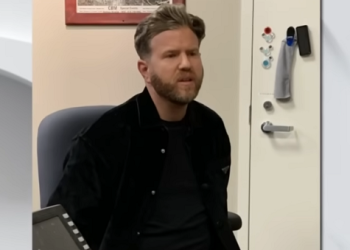By Tom Elias
Drive almost any road in the vast San Joaquin Valley and you’ll see irrigation pipes standing up several feet tall in the middle of fields and orchards, pipes that once were underground.
These metallic artifacts are emblematic of the utter failure of a 2014 law once billed by then-Gov. Jerry Brown as a landmark achievement. The omnipresent pipes, often unnoticed by speeding motorists, are symptoms of subsidence, the result of decades of overpumping groundwater in all the frequent episodes when California endured drought conditions, right up to this moment.
Pumping their ever-deeper wells has been about the only way the state’s huge and nationally vital agribusiness community could maintain production of everything from peaches to peas, broccoli to pistachios, tomatoes to citrus, cotton to cauliflower, when snowpack has been thin atop the high Sierra Nevada Mountains and the state’s two large aqueducts cut back their deliveries to mere drops – as they’ve had to do this summer.
The 2014 law was actually a rather ho-hum, non-crisis approach to something that was already a big problem many years before the law passed. The timetable of the law has increased metering on wells tapping into groundwater, but leaves no limit on what anyone can pump until 2030, when it may be too late.
For, as a new Stanford University study shows, not only are the state’s groundwater reserves disappearing, but it’s decreasingly likely they can ever be restored to historic previous levels, or that the land subsidence which leaves irrigation pipes standing high above the land they water can ever be completely reversed.
The comforting thought behind making water wells ever deeper as farms chase new groundwater supplies has always been that recharging the natural storage basins below ground level will eventually replace whatever is used.
The study, from Stanford’s School of Earth, Energy and Environmental Sciences. suggests this isn’t so. In fact, the research suggests ground can continue to sink even if groundwater levels are stable or rising. That’s because when water is taken from the ground, the sheer weight of the land above the storage basin causes a partial collapse of sub-surface rocks around the storage spaces, known as aquifers.
Even refilling those spaces above capacity – not a realistic possibility in the near future – cannot fully reverse this effect. The Stanford research indicated it’s unrealistic to expect ground levels ever to re-rise more than about one-third of the distance they have dropped.
Subsidence levels vary a bit, but so far, they typically total about 20 feet over the last 65 years, gradual but now very visible. That only becomes disastrous when it affects things on the surface, like cracking roads and bridges and moving foundations of homes and other buildings.
The 2014 law, called the Sustainable Groundwater Management Act, forced local water districts to make plans for avoiding “significant and unreasonable” new subsidence. It did not require those agencies to figure out how to prevent disputes between farmers or cities when one well-owner drills deeper and siphons off supplies from others.
This very phenomenon has caused at least two episodes where portions of Central Valley cities suddenly saw their faucets run dry, forcing them to import supplies from unaffected nearby areas. This can be both expensive and unfair, but there’s often little the owners of suddenly dry wells can do about it. For one thing, farmers and cities whose wells dry up can’t always tell where their water went or who took it. They can only be sure it flowed downhill and away from them.
All of which makes it very obvious that the 2014 law was far too meek when it passed and that more serious action to regulate and reduce groundwater use is needed.
But that is not a priority for the current Legislature, dominated by coastal, urban politicians whose constituents are untouched by what’s happening under the ground where their food supplies are grown. Nor have Central Valley lawmakers done much, not wishing to offend corporate farms that often donate big campaign dollars.
Which means more fields will be fallowed in the next few years, more wells will run dry, more cities will take emergency steps to find water supplies and the ground will likely sink ever lower.
Email Thomas Elias at tdelias@aol.com. His book, “The Burzynski Breakthrough, The Most Promising Cancer Treatment and the Government’s Campaign to Squelch It,” is now available in a soft cover fourth edition. For more Elias columns, visit www.californiafocus.net

























